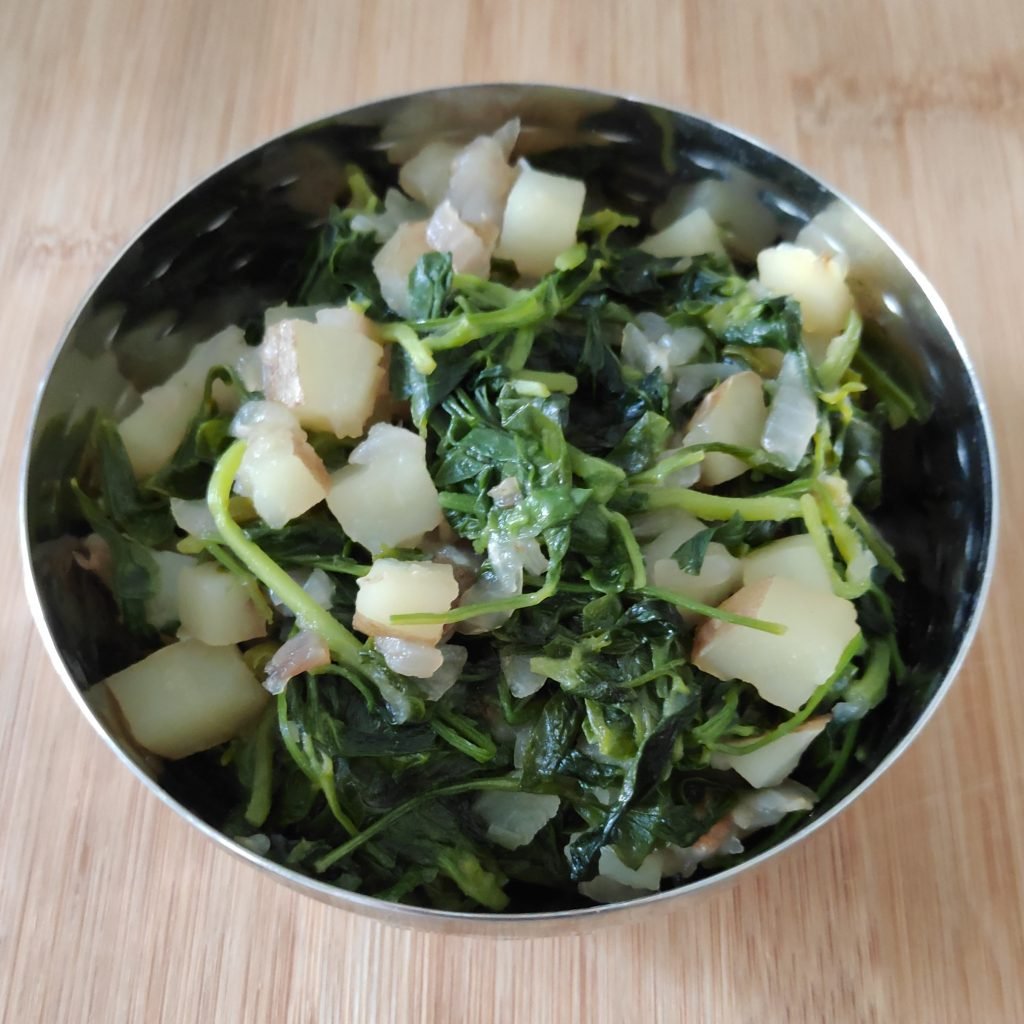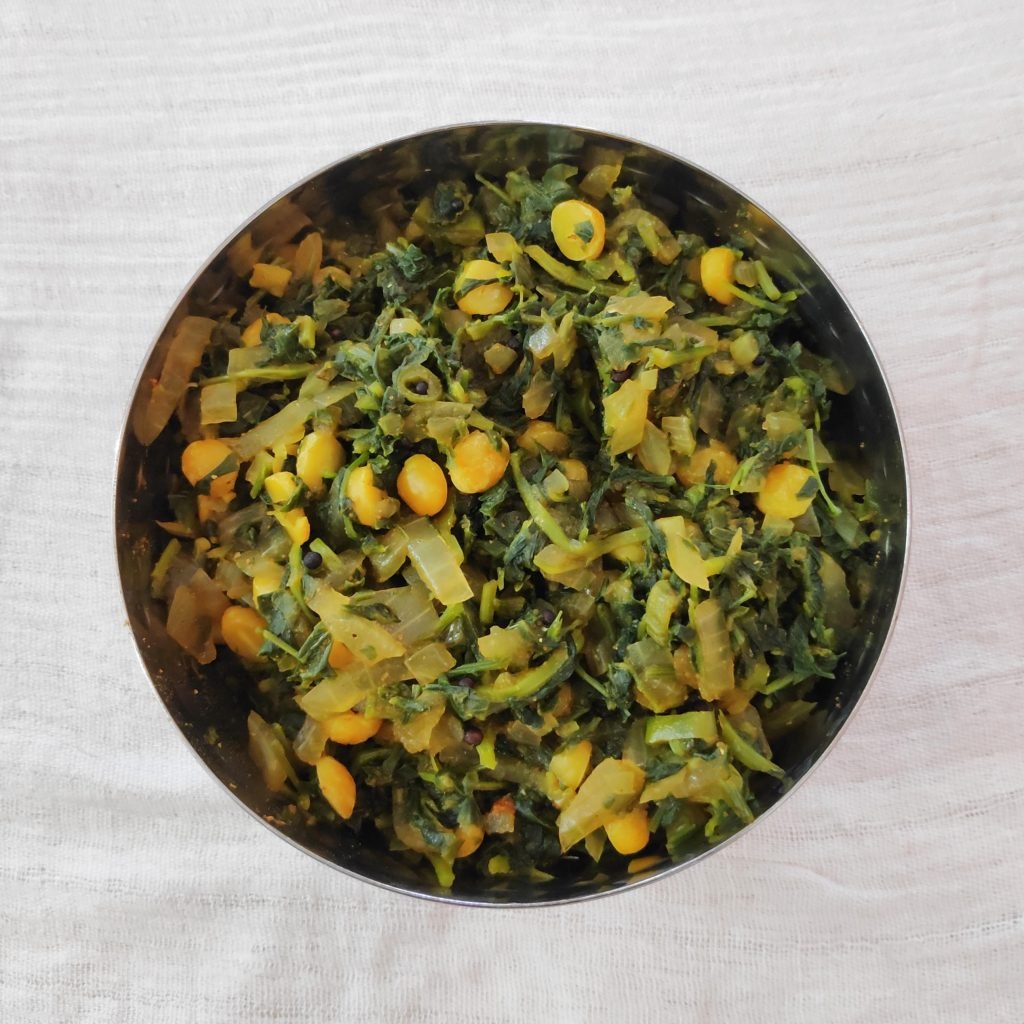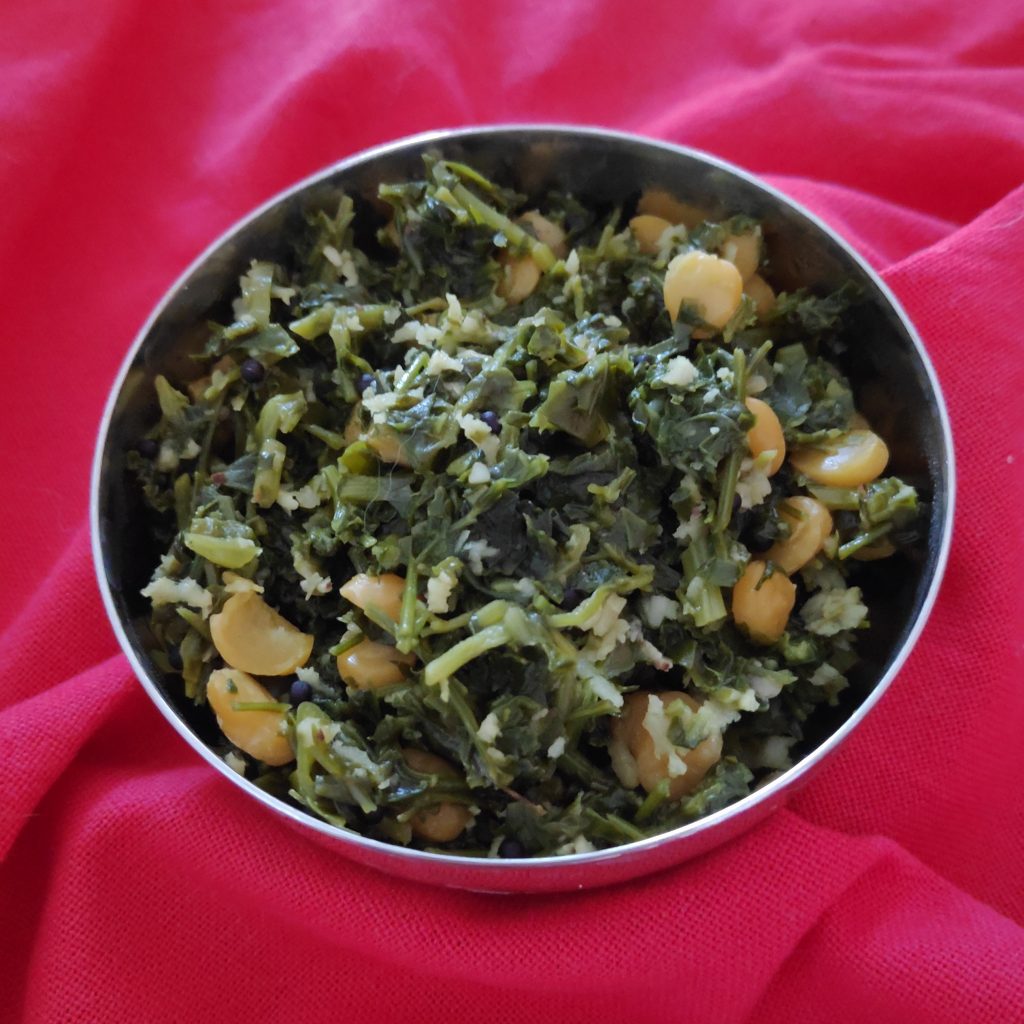
Methi Batatyachi Sukki Bhaji (Fenugreek Leaves with Potato Vegetable)
Fenugreek leaves are very low in calories and fats, have a low glycemic index, are a rich source of dietary fiber and are an excellent source of several vital antioxidants and minerals like folic acid, vitamin C, vitamin A, vitamin E, carotenes, calcium, iron, magnesium, potassium, selenium, and manganese. The soluble and insoluble dietary fiber content in the leaves aid in digestion and smooth bowel movements. Methi leaves contain certain chemicals that aid in insulin production. These leaves are an excellent sources of vitamin K, which is important to help strengthen bone mass and prevent osteoporosis. Fresh methi greens help prevent iron deficiency anemia and may help protect a person from cardiovascular diseases, asthma, and colon and prostate cancers. These greens work as an antibacterial and aid in the cure of Alzheimer’s disease. So all in all, it’s a good ingredient to have in your diet on a regular basis.





